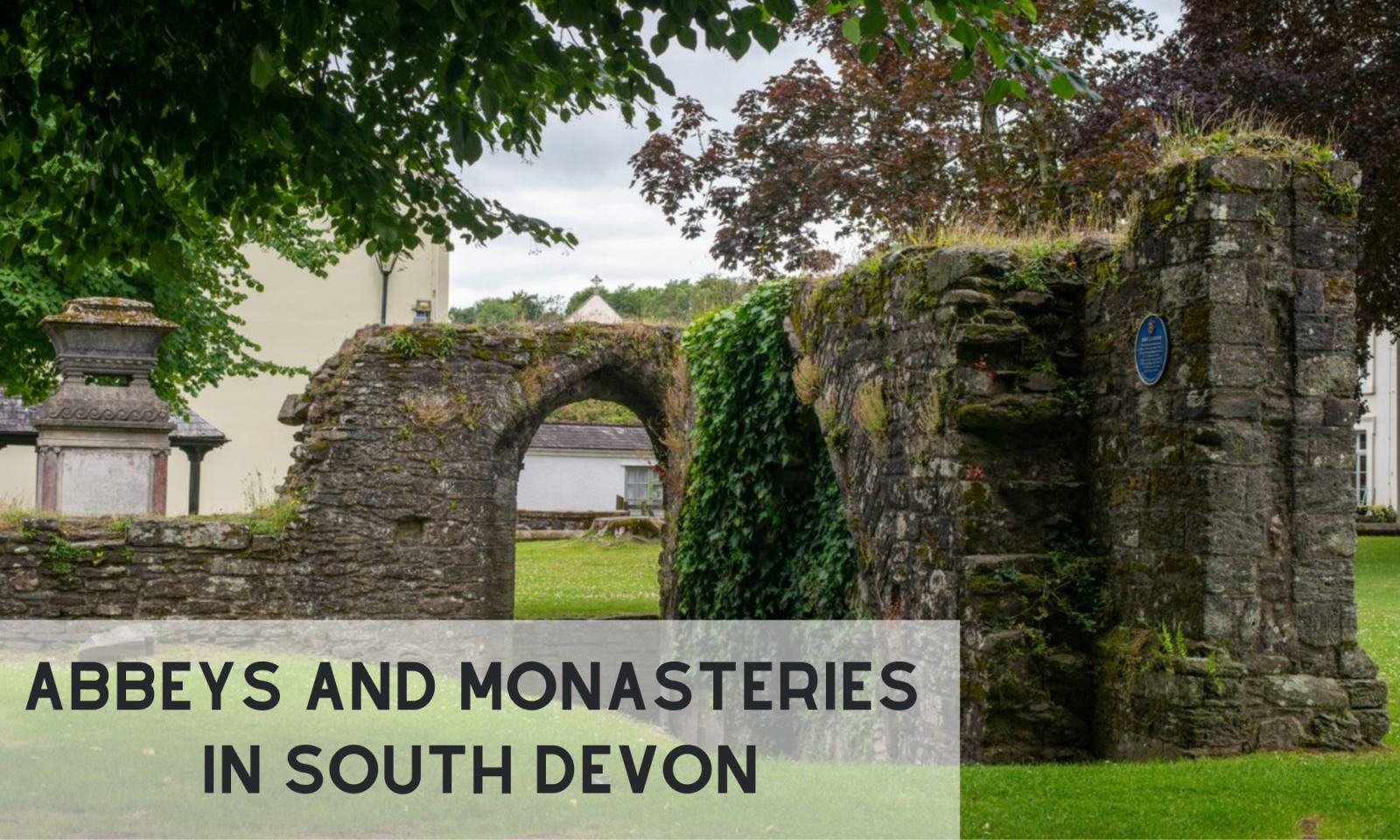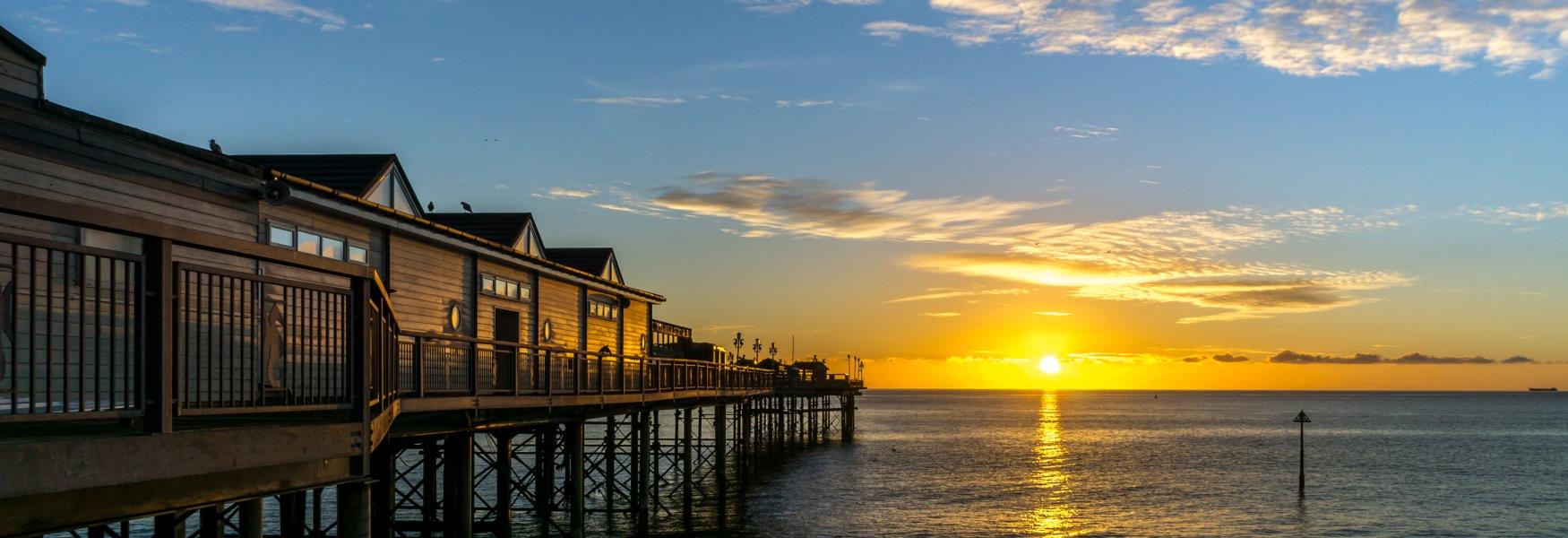 The power and influence of the Catholic church reached its peak in England in the Middle Ages. In fact, during the 14th century, about one in 15 of all Englishmen were churchmen of some kind.
The power and influence of the Catholic church reached its peak in England in the Middle Ages. In fact, during the 14th century, about one in 15 of all Englishmen were churchmen of some kind.
The built remains of this widespread Christian past can be explored across South Devon – from what was once the wealthiest abbey in the South West to the best-preserved medieval abbey in Devon and Cornwall.
We’ve listed some of South Devon’s most historically important abbeys and monastic buildings below for you to uncover the stories of those who lived and prayed in them.
Buckfast Abbey
Located at the centre of a picturesque valley on the edge of Dartmoor National Park, Buckfast Abbey remains home to a community of Roman Catholic Benedictine Monks, who live their lives of prayer, work and study according to the ancient rule of St Benedict.
The monastery stands on the site where the original Abbey was founded in 1018 AD, during the reign of King Cnut. The first Abbey was Benedictine and, in comparison with the fifty or so other abbeys in 11th century England at the time, Buckfast was small and unprosperous.
After a brief spell of trouble during the reign of King John, during which time England was placed under an Interdict by the Pope, Buckfast entered a long period of relative stability. By the 15th century, Buckfast had become a wealthy landowner and a pillar of the establishment. Nevertheless, it had not lost sight of its social responsibilities, running its own guest hall, almshouse and school, as well as maintaining its parishes and manors, and establishing fairs and markets to encourage local trade.
By the beginning of the 16th century the monasteries in England, although generally very rich, were in decline. However, whatever state the monasteries were in, King Henry VIII had his eyes on the wealth which they possessed. For Buckfast, the fateful day arrived on 25th February 1539. The king's commissioners, led by a select group of some five distinguished lawyers, had been travelling around the country for the past twelve months closing monasteries as they went. Two of them, William Petre and John Tregonwell, turned their attention to the West Country in January 1539. In Exeter, they separated in order to "clean up" the remaining monasteries in Devon and Cornwall. William Petre was at Torre Abbey on the 23rd, and Buckfast on the 25th, before continuing to Buckland (27th) and Plympton Priory (March 1st). They met again in Dorset on March 8th to close Forde Abbey.
After the Dissolution, the land which Buckfast had formerly owned became the property of the King. However, tracing the history of Buckfast for the two centuries following the Dissolution is difficult. Even as late as 1793, the ruins of the former Abbey were still very much in evidence, and remained so until the site was bought by Samuel Berry in 1800, who cleared most of the rubble away to make way for the building of a mansion house on the site. Berry retained the Abbot's Tower and the 12th century undercroft, but the rest of the Abbey was flattened.
Over the next eighty years, the Buckfast site changed hands four times, finally falling into the hands of Dr. James Gale in 1872. Ten years later, Dr. Gale decided to sell the property, but was keen to offer it to a religious community. Six weeks later, monks were again living at Buckfast after a gap of 343 years.
Today Buckfast Abbey is a popular tourist attraction where visitors can admire both the stunning architecture and the calm atmosphere in the gardens.
For those wanting a deeper insight into the monastic history of the abbey, the site’s ‘Monastic Way Exhibition’ is an immersive presentation of Benedictine monastic life from its origins to the present day. Entry is £2 per person. Free entry to children aged 11 and under. Opens at 10am last admission 3.30pm, Closes 4.15pm. Closed Sundays.
Tavistock Abbey
Built on the remains of a Benedictine Abbey, the town of Tavistock, which now boasts some 11,000 residents, grew up around an Abbey that became the richest in the South West.
Tavistock Abbey was closely linked with the aforementioned Benedictine abbey at Buckfast which was founded at the same time, and the pilgrim route across Dartmoor which connected them can still be followed.
Founded in the tenth century, Tavistock Abbey lasted for more than 650 years until the Dissolution of the Monasteries under Henry VIII. The buildings then gradually decayed, but some have remained, one of the most complete being now known as ‘The Abbey Chapel.’
The main Tavistock Abbey building was demolished in the eighteenth century. However, there are a few remains, from Betsy Grimbal’s Tower, Court Gate, a few original walls of the site, and of Abbey Chapel and the Abbey Tower alongside it.
Aside from architectural remains, it appears we also have the Benedictine monks of Tavistock Abbey to thank for another important piece of Devon’s heritage – the Devonshire Cream Tea!
Legend has it that, when the abbey was plundered and badly damaged by marauding Vikings in 997AD, local workers were rewarded for their hard work in restoring the building with bread, clotted cream and strawberry preserves … and so the Devon cream tea was born. The tea proved so popular that the monks continued to serve them to passing travellers - a tradition upheld at Tavistock’s Bedford Hotel today, which remains one of the finest places in the county in which to enjoy a Devon Cream Tea.
Teignmouth Abbey (St Scholastica’s Abbey)
As you come out of Teignmouth on Dawlish Road and approach the top of the hill, keep an eye out on the left-hand side and you may catch a glimpse of one of Teignmouth’s hidden gems of architectural and historic interest; St Scholastica’s Abbey.
Now residential apartments, Teignmouth Abbey or St Scholastica’s Abbey (as it’s often called) was once a Benedictine nunnery built back in 1863, but its history goes back even further.
St Scholastica's Benedictine nunnery was originally founded in 1662 in Dunkirk, France. In 1793, the convent at Dunkirk was sacked by revolutionaries and the religious imprisoned for eighteen months. Eleven of them died before permission was granted for the removal of the community to England. They arrived in London in May 1795 and took up residence in an old convent in Hammersmith, before transferring to the new abbey in Teignmouth.
Torre Abbey
Torre Abbey is Torbay's most historic building, an ancient scheduled monument dating back to the 12th Century and set within 18 acres of garden and parkland.
Founded in 1196, Torre Abbey became the wealthiest English monastery of the order of Premonstratensian canons. The extent of its survival makes Torre Abbey the best-preserved medieval abbey in Devon and Cornwall. After King Henry VIII closed the monastery in 1539, two of its former ranges were adapted for use as a private house. From 1662, this house became the home of the Cary family, who lived here for nearly 300 years.
The delightful Torre Abbey Sands and Torre Abbey Meadows are both fantastic nearby locations to explore when visiting the English Riviera.
Buckland Abbey
Founded in 1278, Buckland Abbey was the last of the Cistercian monasteries to be built in medieval England and Wales. For over 250 years, the monks who farmed the vast estate lived in the peaceful solitude of the Tavy valley.
Passed into private hands after Henry VIII's Dissolution of the Monasteries, Buckland Abbey underwent a major conversion to become the grand home of rich and famous seafarers, including Sir Francis Drake. For all that has changed over 750 years, Buckland is a place that has kept its air of peace and tranquillity for modern day pilgrims to enjoy.
Today, The Abbey is part museum, part house, and filled with treasures such as the legendary Drake’s Drum, original Elizabethan plasterwork and a fantastic Georgian staircase.
Plympton Priory
Although not a large-scale Abbey or Monastery, Plympton Priory was once the wealthiest monastic house in Devon and the fourth wealthiest establishment of the Augustinian Order in England and Wales. The Augustinians were not monks in the strict sense, but rather communities of canons - or priests - living under the rule of St Augustine.
From the 12th century onwards, the Augustinians undertook much valuable work in the parishes, running schools and hospitals as well as maintaining and preaching in parish churches. The Plympton Priory supplied various local clergy (not always without controversy!) and continued to be an important local establishment until its dissolution in 1539.
Today, a monument includes much of the surviving remains of Plympton Priory which is situated on the east side of the city of Plymouth and the west side of the medieval town of Plympton.
We hope you enjoyed reading this brief, but fascinating history of the Abbeys and Monasteries in South Devon. If you’re interested in learning more about Devon’s past, head to our History & Heritage blog post section here. To keep up to date with all things South Devon, be sure to follow us on Twitter and like our Facebook page. We’ll let you know about our latest competitions, blog posts, what’s on in the region and more!
Related
Comments
Comments are disabled for this post.



 to add an item to your Itinerary basket.
to add an item to your Itinerary basket.










